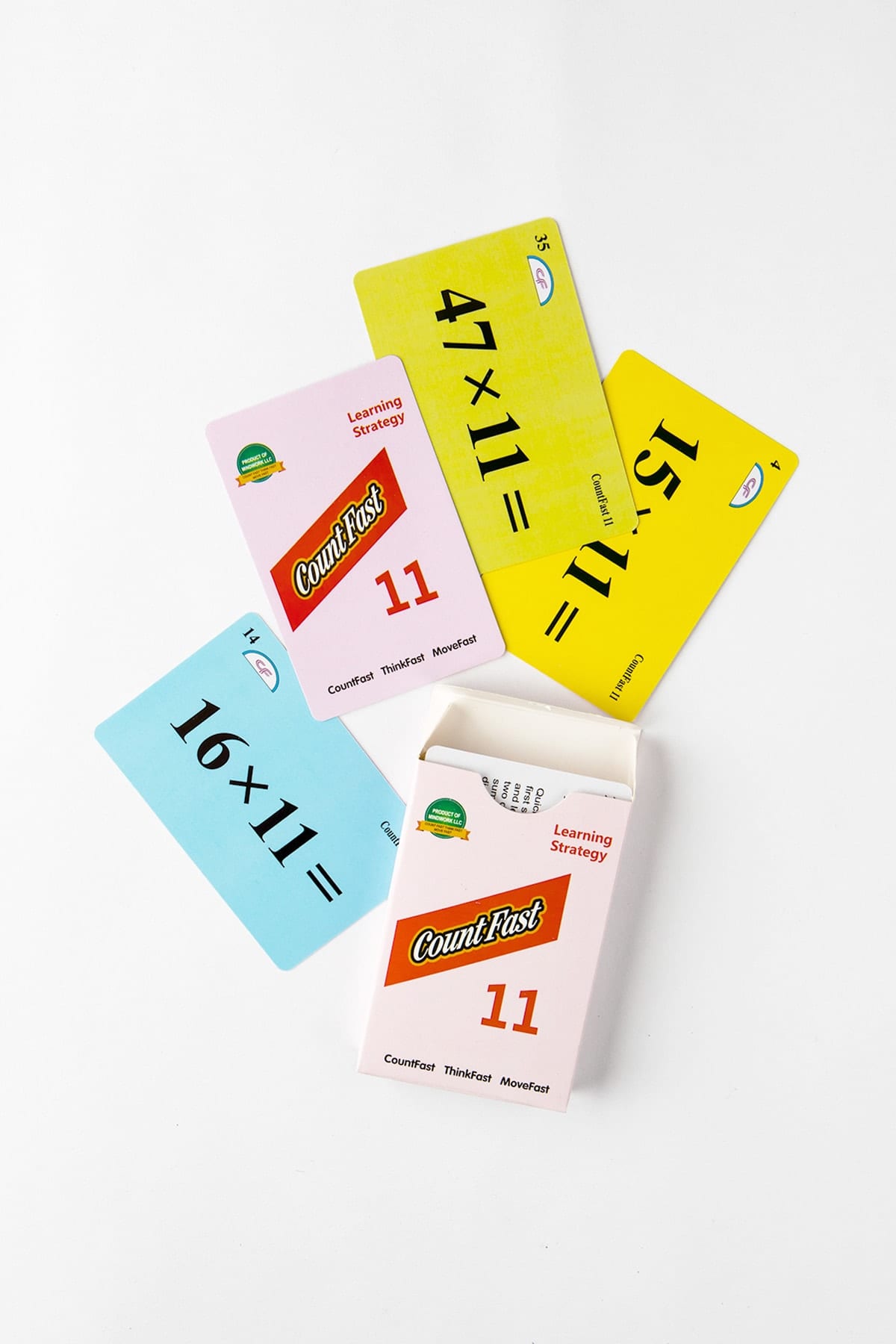 OVERVIEW & PURPOSE
OVERVIEW & PURPOSE
Week 1 of the 1st Grade CountFast program focuses on the recognition of the numbers 0 – 12, as well as the addition, subtraction, and equal signs often used in simple equations. This module includes lessons to practice reading and writing numbers and organizing them based on their values. Spend 15 minutes each day on one of the activities listed in this module. Card decks should go home with students each day for additional practice with a parent at home. Each week, a new deck is introduced and the previous deck is for the student to keep at home for continued practice.
EDUCATION STANDARDS
- MATH.CONTENT.K.CC.A.3Counting and Cardinality
- NCTM Standard: connect number words and numerals to the quantities they represent
- NCTM Standard: develop understanding of the relative position and magnitude of whole numbers
OBJECTIVES
- Read the numbers zero through twelve in digit and word form.
- Write the numbers zero through twelve in digit form.
- Read and write the symbols for equal, add (plus), and subtract (minus).
CountFast 1st Grade Home Connection – Reading and Writing Daily Activities
DAY 1:
Use the yellow cards from the deck. These have the numbers 0-12 written as digits and as words. You will also find a card for addition (plus), subtraction (minus), and equal. Hold up the yellow cards one at a time and ask your child to say what the number or symbol is. See how quickly your child can say the numbers as you quickly hold up one card after another. Record your child’s time on the “Reading Time Record” card. Have child lay out the numbers 0-12 in order in front of them. Touching each card one at a time, say the numbers in order from least to greatest together. Repeat procedure but say the numbers in order from greatest to least.
DAY 2:
Repeat the activities from Day 1 and record the time on the “Reading Time Record” card. Talk with your child about how his/her time is improving each day.
With the yellow cards laid out in number order, ask your child questions about “how many more” or “how many fewer” some of the numbers are from each other. (For example: “How many more is 7 than 4?” Your child should start by pointing to the ‘4’ card. Then touch-count each card after the four, up to the seven. They will touch three cards (5, 6, and 7) to determine that 7 is three more than 4.)
DAY 3:
Repeat the activities from Day 1 and record the time on the “Reading Time Record” card. Talk with your child about how his/her time is improving each day.
Today, we practiced making and solving problems using the yellow cards. Ask your child to show you a problem that he/she can make with the cards. (Examples: 1 + 2 = 3, 5 – 1 = 4, and so on.) The goal is to show five correct problems in a row.
DAY 4:
Repeat the activities from Day 1 and record the time on the “Reading Time Record” card. Talk with your child about how his/her time is improving each day.
Practice creating number problems with the yellow cards. The goal is to create five correct equations. Using the blue set of cards, ask your child to trace each of the numbers correctly (three times each). Use the blue “Writing Time Record” to record how many seconds it takes for the child to trace all of the blue cards.
DAY 5:
Repeat the activities from Day 1 and record the time on the “Reading Time Record” card. Talk with your child about how his/her time is improving each day.
Practice creating number problems with the yellow cards. The goal is to create five correct equations. Using the blue set of cards, ask your child to trace each of the numbers correctly (three times each). Use the blue “Writing Time Record” to record how many seconds it takes for the child to trace all of the blue cards. Review using the yellow cards to create number problems.












